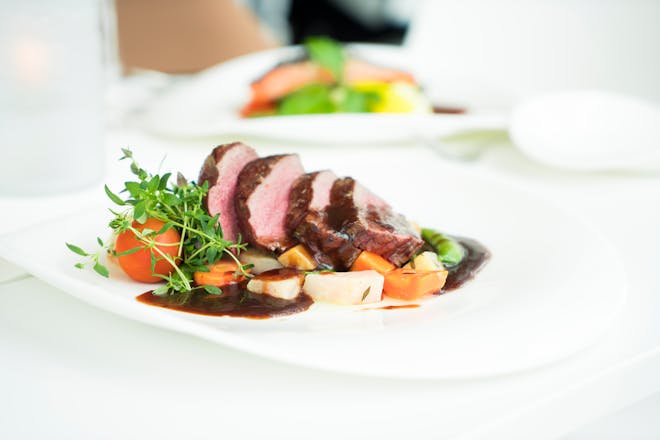Best Reverse Sear Steak: A Culinary Guide to Perfection
If you’re aiming to cook the best reverse sear steak, you’re embracing a technique that has revolutionized steak preparation. This method involves first cooking the steak at a low temperature and then finishing it off with a high-heat sear. The end result? A steak that’s perfectly cooked from edge to edge with a delectable crust that’s the hallmark of a great steak.
The Fundamentals of Reverse Searing
Reverse searing is not a complex process, but it requires patience and attention to detail. The key is to start with a thick-cut steak, preferably one that is at least 1.5 inches thick. Thinner cuts don’t benefit as much from this technique, as they can overcook easily.
Choosing the Right Cut
When it comes to the best reverse sear steak, the cut of meat you choose is crucial. Ribeye, porterhouse, T-bone, and New York strip are all excellent choices. These cuts have enough marbling to remain juicy and flavorful throughout the cooking process.
Temperature and Timing
The first phase of reverse searing involves cooking your steak in a low-temperature oven, around 200-275°F (93-135°C). The goal is to bring the steak up to a temperature that’s just shy of your desired level of doneness—usually around 10-15 degrees lower. This might take 45 minutes to an hour, depending on the steak’s thickness and your oven’s performance.
Finishing with a Sear
Once your steak reaches the desired internal temperature, it’s time to sear. Heat a heavy skillet or cast iron pan over high heat, and when it’s smoking hot, add a little oil with a high smoke point, like canola or grapeseed oil. Sear the steak for 1-2 minutes on each side to develop a rich, brown crust. Remember to sear the edges as well.
Reverse Sear Steak: Step-by-Step Guide
Here’s a detailed guide to help you master the best reverse sear steak technique:
Preparing Your Steak
Begin by seasoning your steak generously with salt and pepper. You can also add other seasonings like garlic powder, onion powder, or a touch of smoked paprika, depending on your preference. Let the seasoned steak rest at room temperature for about 30 minutes.
Cooking in the Oven
Preheat your oven to a low setting between 200-275°F (93-135°C). Place the steak on a rack over a baking sheet to ensure even cooking. Insert a meat thermometer into the thickest part of the steak, and cook until it’s about 10-15 degrees below your target temperature.
The Perfect Sear
After removing the steak from the oven, let it rest while you preheat your skillet. The high-heat sear will only take a few minutes, so have everything ready. Sear the steak on each side, making sure to create a deep, even crust. Don’t forget to sear the fat cap and edges as well.
Rest and Serve
Once seared to perfection, let your steak rest for about 5-10 minutes. This allows the juices to redistribute throughout the meat, ensuring a moist and tender bite. Slice against the grain and serve immediately.
Additional Tips for the Best Reverse Sear Steak
Let’s hone in on some extra tips to elevate your reverse sear steak game:
Letting the Meat Rest
Resting is just as important as the cook itself. After the initial low-temperature cook, a short rest before searing will prevent the steak from overcooking. A final rest post-sear is essential for juicy results.
Using a Reliable Thermometer
A meat thermometer is your best friend when reverse searing. It ensures precision and prevents guesswork, allowing you to cook the steak to your exact preferred doneness.
Adding Flavor
Consider adding aromatics like thyme, rosemary, or garlic to the pan during the final sear. A knob of butter basted over the steak can also add richness and flavor.
